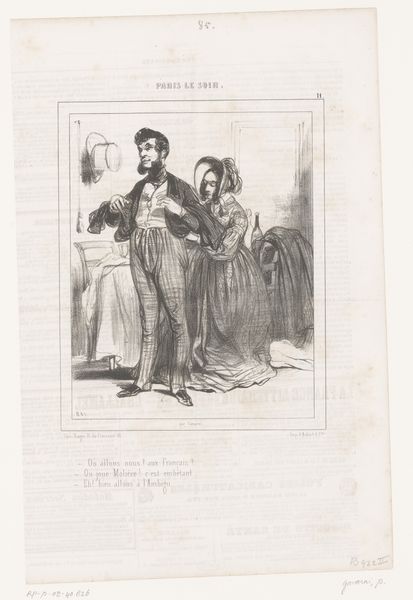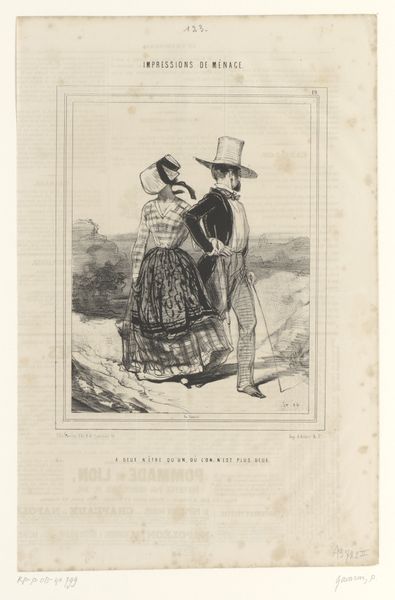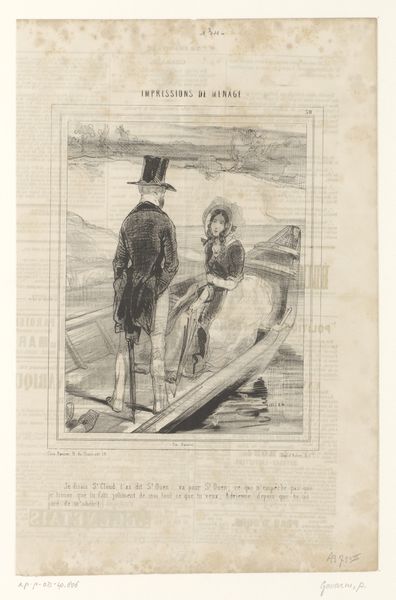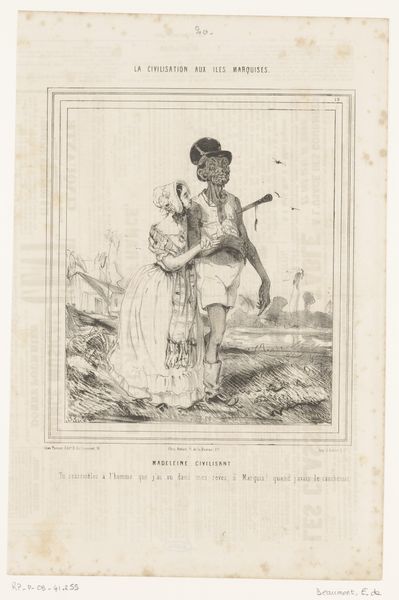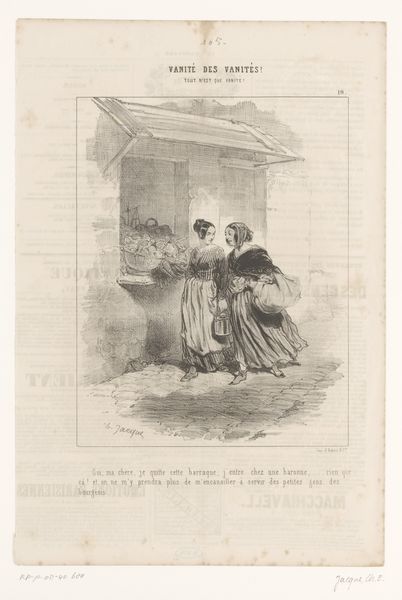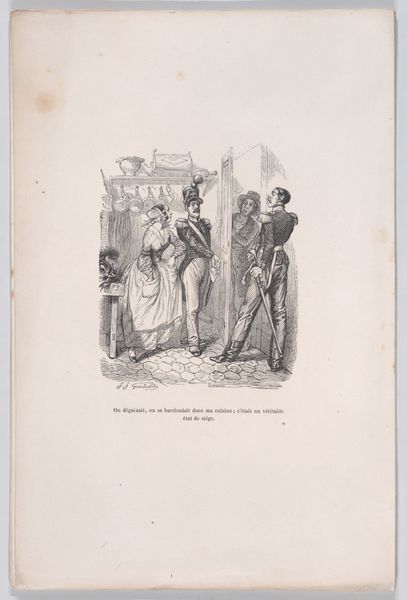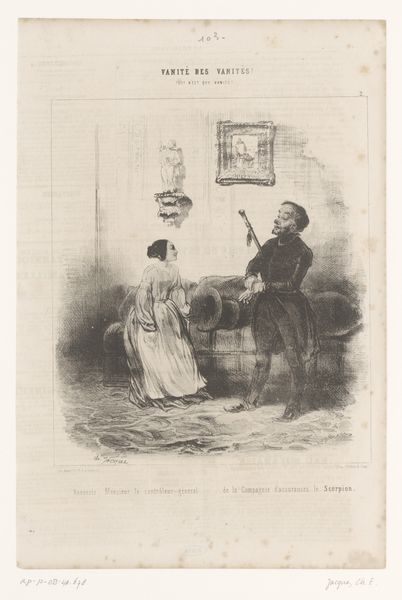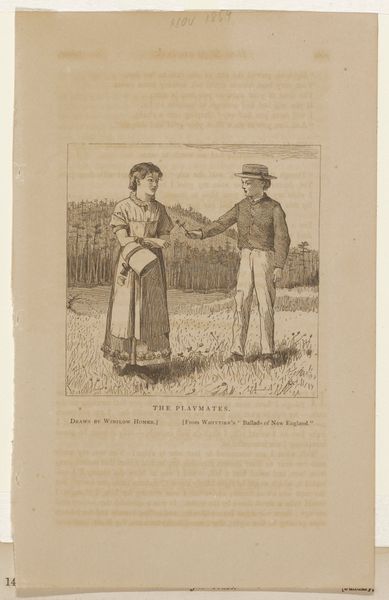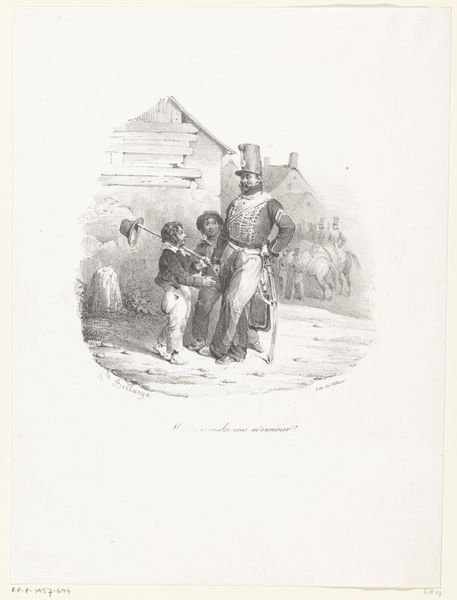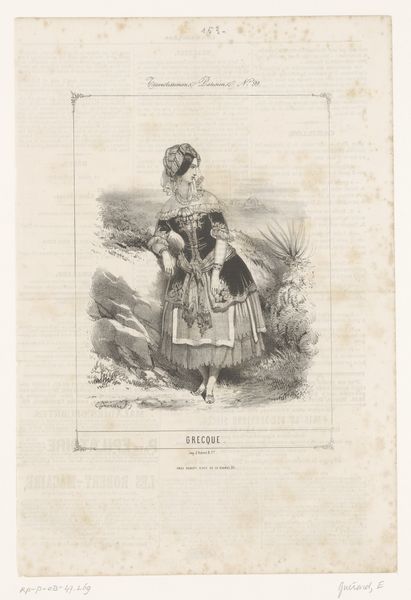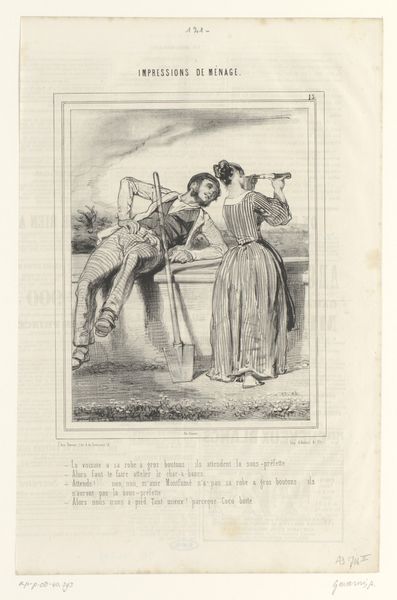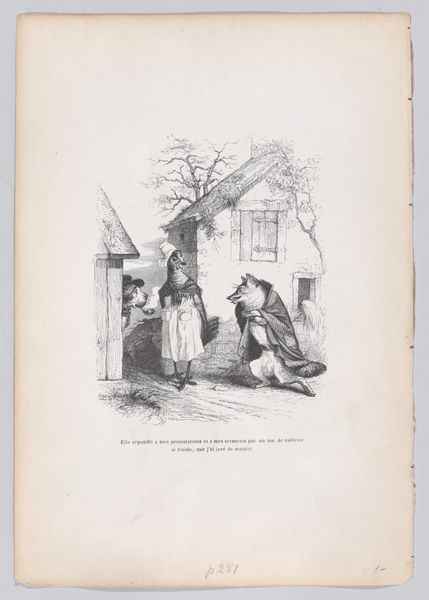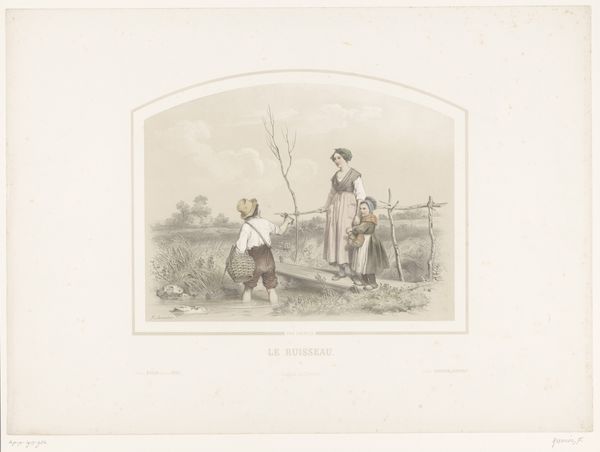
drawing, lithograph, print, paper, ink
#
drawing
#
narrative-art
#
lithograph
# print
#
caricature
#
paper
#
ink
#
romanticism
#
genre-painting
#
history-painting
Dimensions: height 363 mm, width 245 mm
Copyright: Rijks Museum: Open Domain
Editor: This lithograph from 1843, entitled "Man en vrouw wandelen gearmd op het platteland," by Charles Jacque, feels quite satirical. It almost reads like a commentary on rural life or perhaps a jab at relationships. How do you interpret this work through its historical context? Curator: Well, situated in 1843, this lithograph engages with the prevalent Romanticism of the era while simultaneously acting as a piece of genre art depicting everyday life. It's part of a larger narrative and a visual argument about the socio-political atmosphere of the time. The clothing and caricatured faces, set against the backdrop of a rural landscape, suggest a specific commentary. Editor: What sort of commentary do you suspect? Curator: Given that it is also a form of caricature, we should look at the function of such imagery. What social anxieties or commentary do you think were being addressed in the art world in 1843? Consider how this print might have been disseminated and received by different audiences, how power is being performed and negotiated in this scene, who benefits, and whose interests are left out? Editor: Hmm, maybe it is about the anxieties of class differences playing out in the countryside. It certainly wasn't created in a vacuum. Curator: Precisely. And think about where this image would be seen. Likely reproduced in periodicals that served specific social classes. Understanding its production and intended audience clarifies its satirical purpose and contributes to our larger historical understanding. Editor: It's interesting to consider how such an image can become a tiny piece of evidence in understanding the social landscape of the past. I will keep this in mind as I see more art of the time. Curator: Indeed. Thinking about the historical and public role of art provides us a crucial means of understanding history itself.
Comments
No comments
Be the first to comment and join the conversation on the ultimate creative platform.

